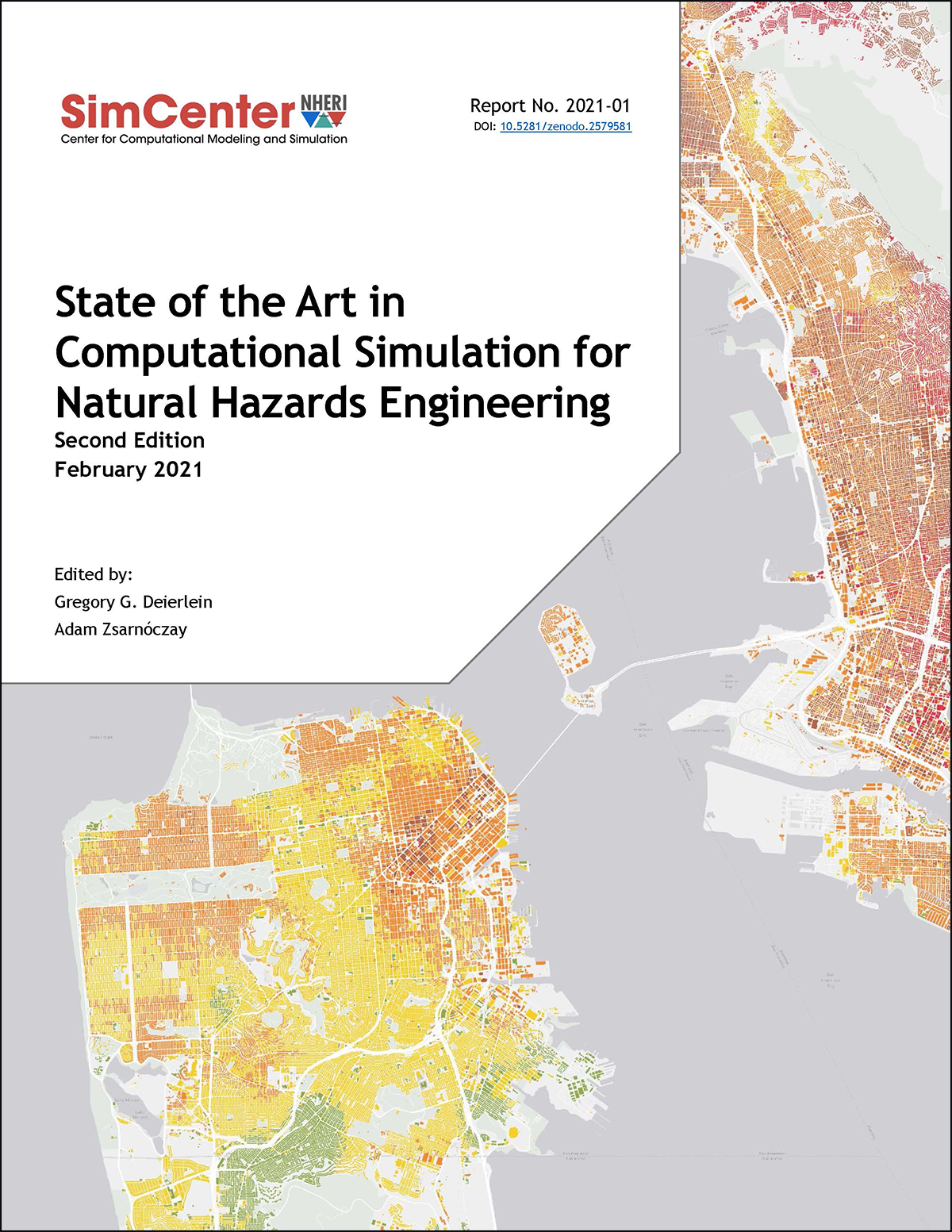SimCenters second report on the "State of the Art in Computational Simulation for Natural Hazards Engineering" provides an updated overview and review of the available methods, simulation approaches, and software tools for natural hazards engineering. This second edition reflects comments and suggestions provided by leading researchers, and it also includes new chapters on disaster recovery modeling and applications of machine learning and artificial intelligence technologies. The report is the result of concerted effort by a large number of experts in the field of natural hazards engineering, and it is a valuable resource for researchers to incorporate into future research plans.
The simulation methods discussed in this report are an essential component of the research required to address the three grand challenge areas and associated research questions outlined in the NHERI Science Plan (2020). Chapters of the report are organized into five sequential parts including: (1) simulation methods to characterize the natural hazards; (2) response simulation of structural and geotechnical systems and localized wind and water flows; (3) quantifying the resulting damage and its effects on the performance of buildings, transportation systems, and utility infrastructure systems; (4) strategies and emerging tools to model recovery from natural disasters; and (5) the cross-cutting applications of uncertainty quantification methods and artificial intelligence to natural hazards engineering.
In addition to summarizing the state of the art in the various topic areas, each chapter of the report identifies major research gaps and needs, with the intent that researchers will prepare research proposals to NSF and other agencies to advance the field by filling these gaps. Further, the report summarizes how tools being developed by the NHERI SimCenter help advance research in various areas of natural hazards engineering and allow the research community to leverage state-of-the-art simulation methods and high-performance computing resources. Readers are encouraged to contribute feedback regarding this report and the SimCenter simulation tool development through the online SimCenter Forum at http://simcenter-messageboard.designsafe-ci.org/smf/.
